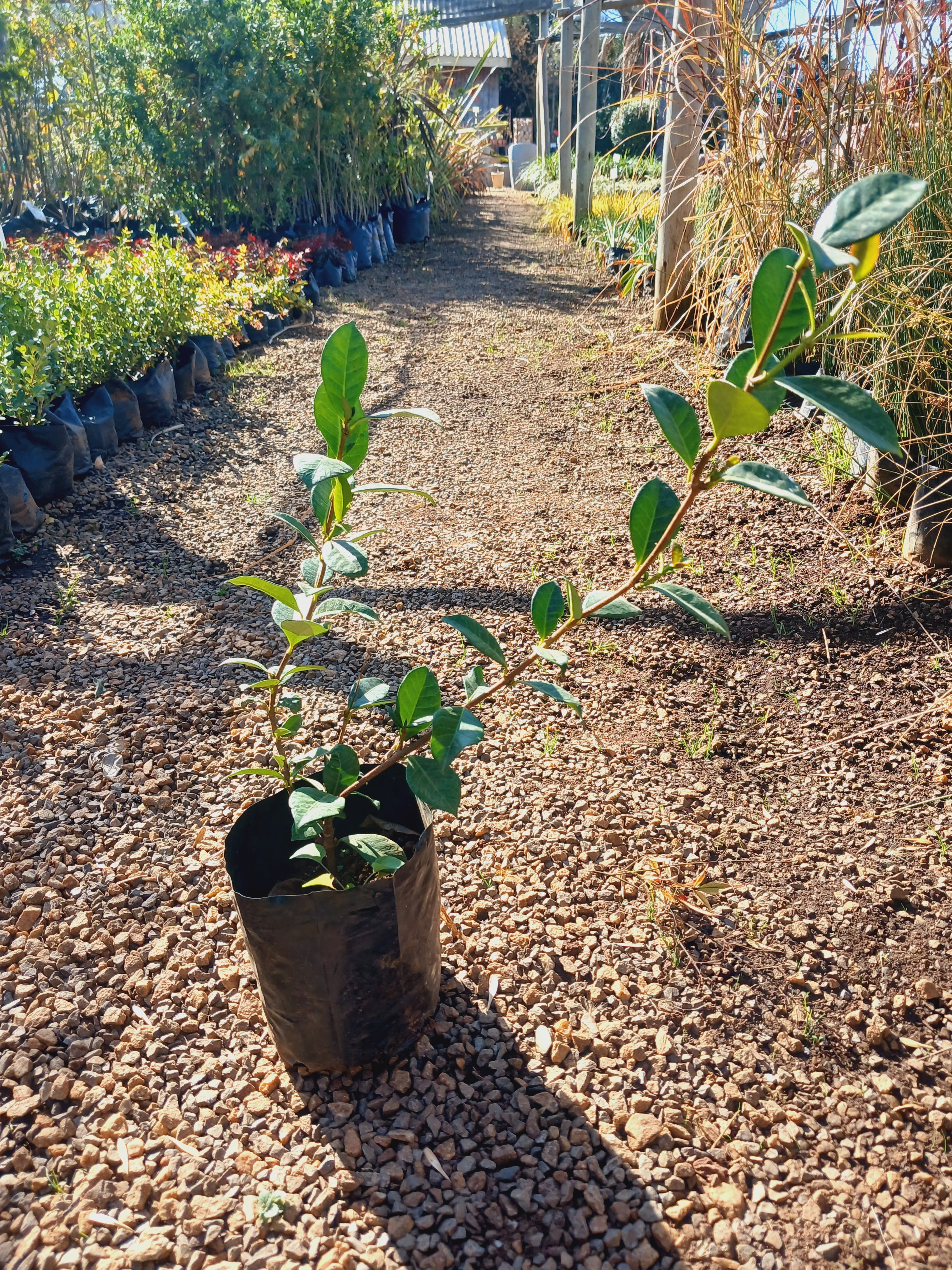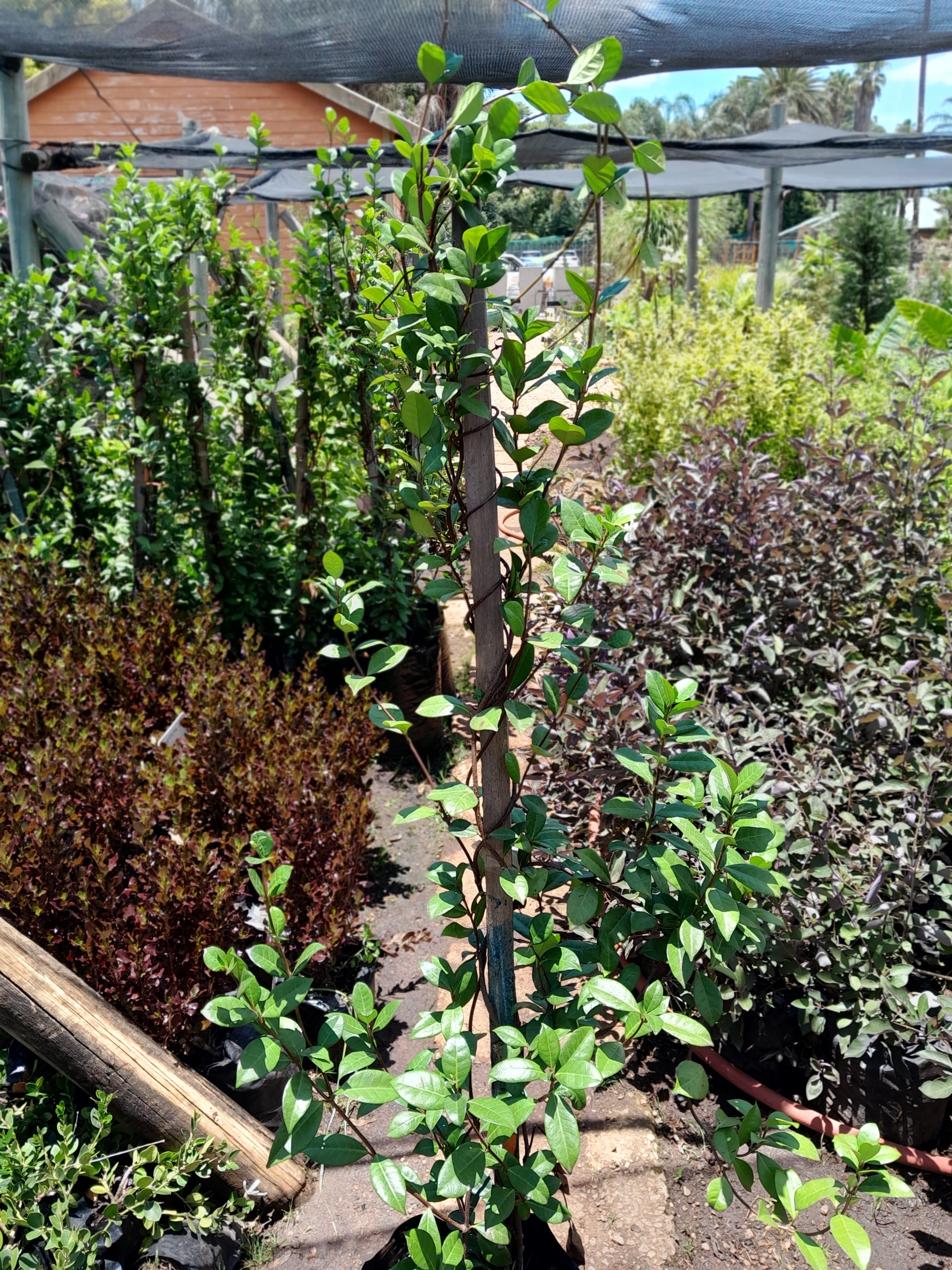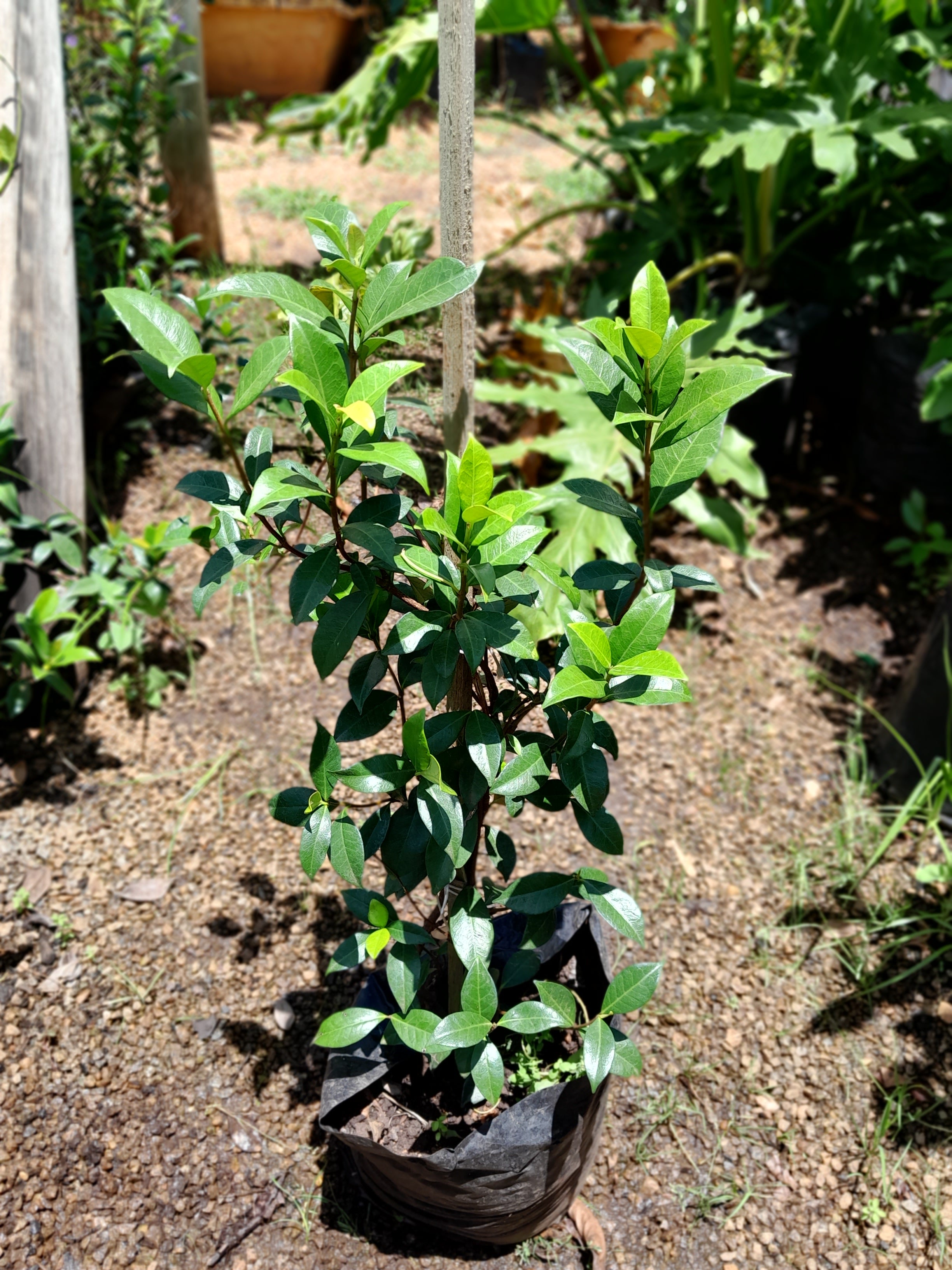Star Jasmine is an energetic grower that can very rapidly cover a wire fence or climb to the top of a tree. If a gardener is willing to give it a wire trellis, the jasmine will quickly envelop pillars with an array of leaves and will spread itself over the beams of a pergola. Landscapers like to use this creeper as a ground cover because it rapidly fills large tracts of land in both the hottest sun and in the cool shade of deciduous trees.
In modern horticulture and particularly in small gardens, Star Jasmine has become an iconic pot plant because it can so easily be trained up steel obelisks or wooden tepees. Planted in hanging baskets, the stems tumble beautifully over the sides when they are heavy with flowers.
Experienced topiary artists use this jasmine to create ‘lollipop’ trees by plaiting several sturdy branches together, supporting them well and, through regular pruning, encouraging the jasmine to form a dense crown of leaves at the top. Others prune the plants into large green balls that are covered with little flowers during spring. There are even gardeners who plant other tall trees in rows with circles of star jasmine around their feet; with regular pruning the jasmines quickly form the prettiest informal hedges.
When do they Bloom?
Star Jasmine flowers best during October and November, but flowers continue to appear right into January.
Most Suitable Climate
Star Jasmine will grow everywhere and tolerate cold and frost. Although harsh winter conditions sometimes damage the plants they recover quickly and soon produce new shoots.
What they Need
Location: full sun and semi-shade. It also grows in deep shade but will not flower as well.
Soil: as long as it is well-drained, any soil is suitable. For the best results, add liberal quantities of compost and bone meal to the planting holes. Mulch that keeps the roots cool and damp for longer will save water.
Water: young plants need regular water while they are becoming established; thereafter they are relatively drought-resistant and suffer little damage when watering is withheld. Potted jasmine needs to be watered regularly otherwise the leaves become pale and yellow.
Fertilizing and Pruning: feed with a balanced fertilizer in late summer, after the flowering season, to give the leaves strength and to encourage the plant to form flowers for the next season. Prune regularly to keep the plants neat and to stimulate dense growth. When planted as a ground cover, star jasmine can be cut back heavily with a hedge cutter to keep the growth low on the ground. Take care when you prune, because the stems secrete a milky substance that can be a skin irritant.
Styled With



